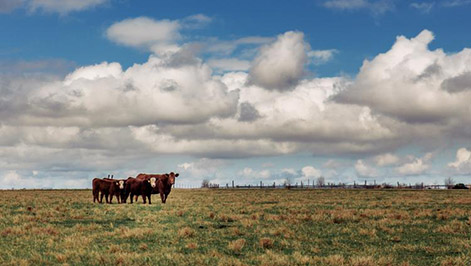Reclamation of Native Tallgrass Prairie at the Kansas Army Ammunition Plant
 Investigators:
Investigators:
Tracey N. Johnson, M.S. Student
Project Supervisor:
Dr. Brett Sandercock
Funding:
U.S. Department of Defense
Cooperators:
U.S. Department of Defense
Location:
Kansas Army Ammunition Plant, Parsons, KS
Completion:
2006
Status:
Completed
Objectives:
Investigate the potential for changes in traditional livestock management to restore native grassland and riparian habitat.
Results:
Cattle-grazing is a dominant land use in the United States, with more than 300 million hectares of land grazed each year. The habitat changes facilitated by cattle grazing can influence resource availability and habitat selection for associated wildlife. To investigate the potential for changes in traditional livestock management to restore native grassland and riparian habitat, we evaluated biological community responses to winter-grazing and livestock exclusion at the Kansas Army Ammunition Plant in southeastern Kansas. In grassland habitats, we combined winter-grazing by domestic cattle and discontinued fertilization in an attempt to restore pastures dominated by tall fescue to native tallgrass prairie and improve habitat for grassland-breeding birds. We observed a decrease in tall fescue and an increase in native, warm-season grasses in winter-grazed pastures compared to fertilized, year-round grazed pastures. Grassland-breeding bird responses to winter-grazing were species-specific. Dickcissels preferred winter-grazed pastures, while Eastern Meadowlarks and Grasshopper Sparrows tended to prefer year-round grazed pastures. Dickcissels were negatively correlated with the presence of cattle during the breeding season and the abundance of tall fescue. Grasshopper Sparrows were negatively correlated with native, warm-season grass abundance and visual obstruction, but were positively correlated with forb abundance. Henslow's Sparrows and Common Yellowthroats were detected breeding in low numbers on pastures that had been winter-grazed for five years. Our results suggest that winter-grazing and discontinued fertilization of agricultural grasslands can direct semi-natural plant communities toward tallgrass prairie and benefit some grassland-breeding birds.
In riparian habitats, livestock were excluded from 1996 to 2005. We measured bird community responses in grazed and ungrazed sites using baseline data collected in 1996-97 and post-treatment data collected in 2005-05. Riparian bird community data were analyzed using robust design mark-recapture models that allowed us to evaluate changes in bird species richness while accounting for differences in detectability among species. We detected increases in species richness in both ungrazed and grazed treatments. We observed few differences in community vital rates between treatments; however, we did detect differences in guild responses. The changes observed within both grazed and ungrazed riparian bird communities were likely influenced by regional fluctuations in species richness and composition.
Products:
Thesis:
Johnson, T. N. (M.S., 2006; advisor Sandercock) Ecological restoration of tallgrass prairie: grazing management benefits plant and bird communities in upland and riparian habitats. Master's Thesis, Division of Biology, Kansas State University.
Peer-reviewed Publications:
Johnson, T.N., and B.K. Sandercock. 2010. Restoring tallgrass prairie and grassland bird populations in tall fescue pastures with winter grazing. Rangeland Ecology and Management 63:679-688.
Johnson, T.N., R.D. Applegate, D.E. Hoover, P.S. Gipson, and B.K. Sandercock. 2009. Evaluating avian community dynamics in restored riparian habitats with mark-recapture models. Wilson Journal of Ornithology 121:22-40.
Johnson, T.N., and B.K. Sandercock. 2005. Winter grazing increases native prairie grasses in fescue-dominated pastures (Kansas). Ecological Restoration 23:115-116.